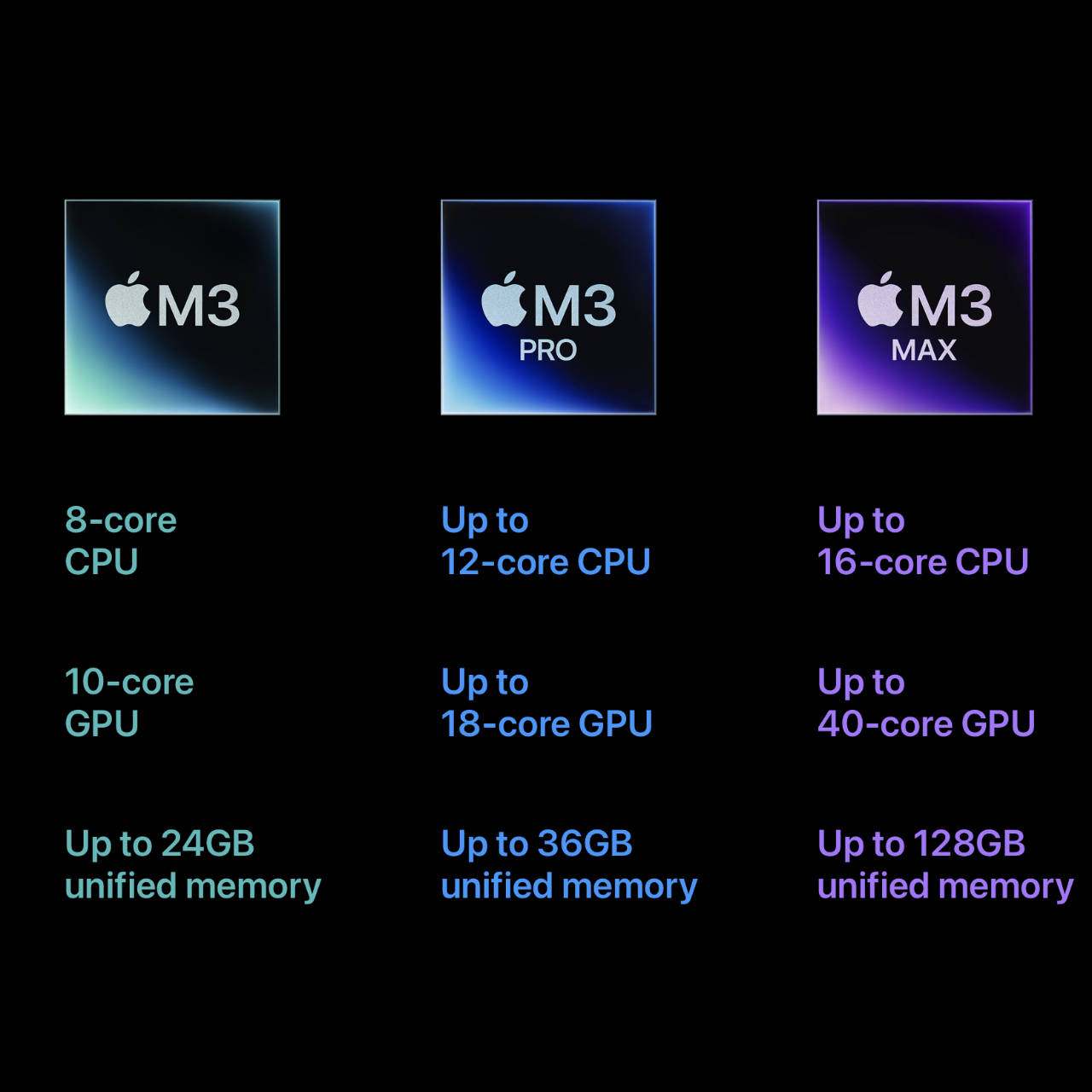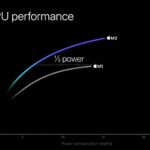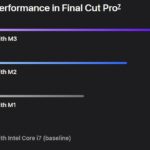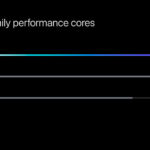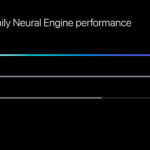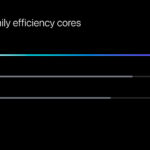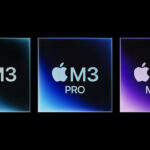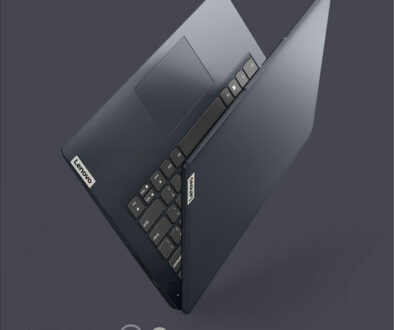Maximum Displays Supported by Apple M3, M3 Pro and M3 Max Systems
Apple’s M3 series chips offer varying degrees of external display support across its different models, which is crucial for users needing multiple monitors for enhanced productivity.
Here’s a breakdown of the maximum supported displays on the different systems based on the specific chip variants within the M3 series:
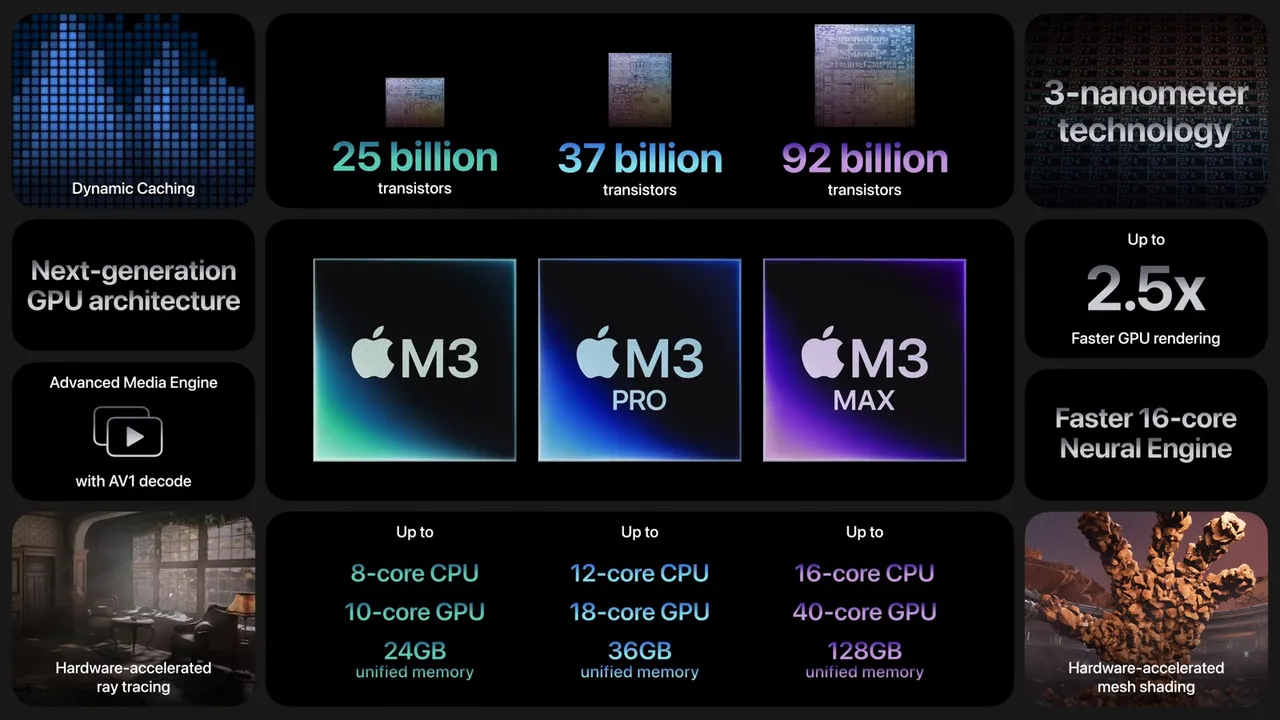
Apple M3 Chip Systems
Devices with the standard M3 chip can support only one external display together with the onboard display on MacBook Air, MacBook Pro and iMac 24. At the time of writing there are no desktops with M3 chips. That is to say the current Mac mini is only available with a choice of M2 or M2 Pro chip while the Mac Studio is available with M2 Max and M2 Ultra. That is not to say that they won’t have a spec bump to use the M3 chip or skip it entirely and go for the M4 chip.
Back to our external display, this can either be up to 6K resolution at 60Hz via Thunderbolt or up to 4K resolution at 144Hz via HDMI. This limitation aligns with Apple’s previous M1 chip in terms of display support, making it suitable for users with moderate display needs. Ergo for the following M3 power systems currently in the market right now, the maximum displays supported are as follows:
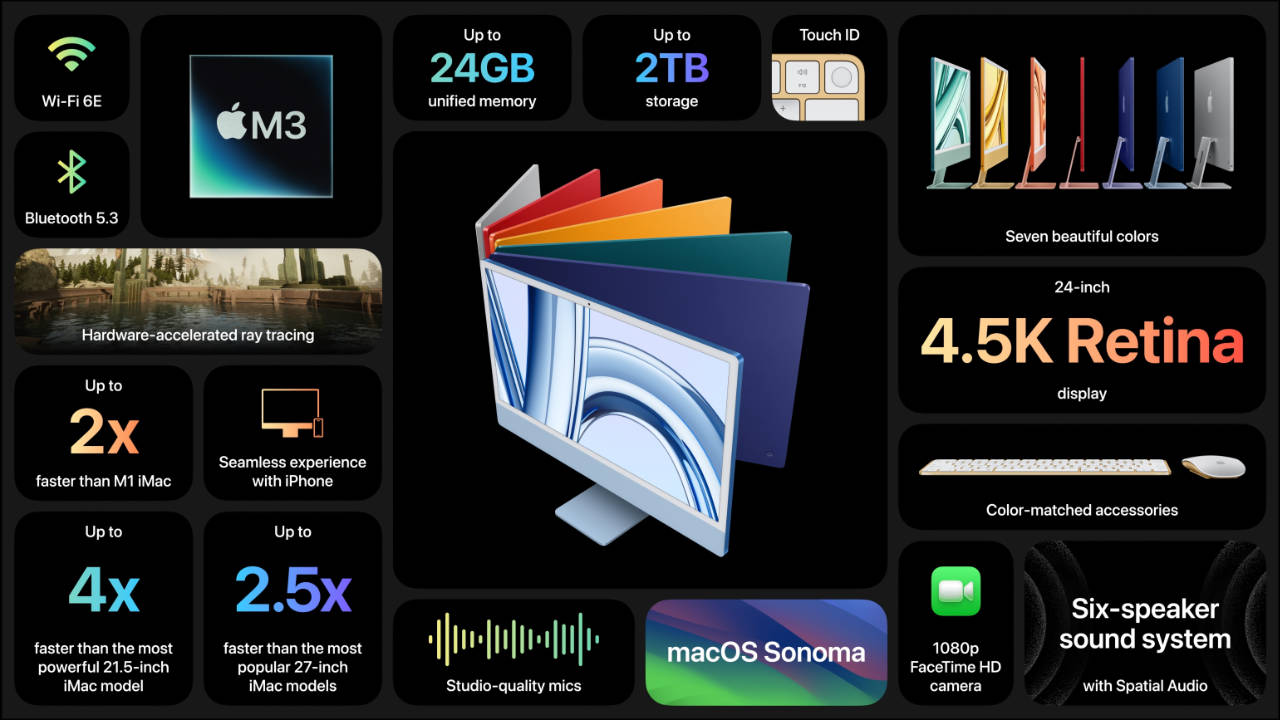
iMac 24 with M3 chip
2 displays (1 onboard, 1 external) so your options are
- 24-inch 4.5K Retina display 4480-by-2520 resolution at 218 pixels per inch with support for 1 billion colors
- and one external display up to 6K resolution at 60Hz
MacBook Air 13 with M3 chip
2 displays (1 onboard and 1 external OR 2 external with MBA lid shut) so your options are
- 13.6-inch (diagonal) LED-backlit display with IPS technology 2880-by-1864 native resolution at 224 pixels per inch 500 nits brightness
- and one external display with up to 6K resolution at 60Hz
OR
- 2 external displays with MacBook Air lid shut (one up to 6K at 60Hz and one up to 5K at 60Hz)
MacBook Air 15 with M3 Chip
2 displays (1 onboard and 1 external OR 2 external with MBA lid shut) so your options are
- 15.3-inch (diagonal) LED-backlit display with IPS technology 2880-by-1864 native resolution at 224 pixels per inch 500 nits brightness
- and one external display with up to 6K resolution at 60Hz
OR
- 2 external displays with MacBook Air lid shut (one up to 6K at 60Hz and one up to 5K at 60Hz)
To summarise, systems powered by Apple M3 chip can support a maximum or two displays (internal or external).
MacBook Pro 14 with M3 Chip
2 displays (1 onboard and 1 external OR 2 external with MBA lid shut) so your options are
- 14.2-inch (diagonal) Liquid Retina XDR display; 3024-by-1964 native resolution at 254 pixels per inch, 1,000,000:1 contrast ratio, XDR brightness 1000 nits sustained, 1600 nits peak (HDR content only). SDR brightness 600nits.
- and one external display with up to 6K resolution at 60Hz

M3 Pro Chip Systems
The M3 Pro chip offers enhanced capabilities, supporting up to two external displays. This can include configurations such as two displays up to 6K at 60Hz over Thunderbolt or a combination of one display up to 6K at 60Hz over Thunderbolt and another up to 4K at 144Hz over HDMI. This model is ideal for professionals who require dual high-resolution monitors for tasks like video editing or graphic design.
MacBook Pro 14 and 16 with M3 Pro Chip
Maximum of 3 displays (1 onboard and 2 external) so your options are
- 14.2-inch (diagonal) Liquid Retina XDR display; 3024-by-1964 native resolution at 254 pixels per inch, 1,000,000:1 contrast ratio, XDR brightness 1000 nits sustained, 1600 nits peak (HDR content only). SDR brightness 600nits OR 16.2-inch (diagonal) Liquid Retina XDR display; 3456-by-2234 native resolution at 254 pixels per inch, 1,000,000:1 contrast ratio, XDR brightness 1000 nits sustained, 1600 nits peak (HDR content only). SDR brightness 600nits AND
- Up to two external displays with up to 6K resolution at 60Hz over Thunderbolt, or one external display with up to 6K resolution at 60Hz over Thunderbolt and one external display with up to 4K resolution at 144Hz over HDMI
OR
- 14.2-inch (diagonal) Liquid Retina XDR display; 3024-by-1964 native resolution at 254 pixels per inch, 1,000,000:1 contrast ratio, XDR brightness 1000 nits sustained, 1600 nits peak (HDR content only). SDR brightness 600nits OR 16.2-inch (diagonal) Liquid Retina XDR display; 3456-by-2234 native resolution at 254 pixels per inch, 1,000,000:1 contrast ratio, XDR brightness 1000 nits sustained, 1600 nits peak (HDR content only). SDR brightness 600nits AND
- One external display supported at 8K resolution at 60Hz or one external display at 4K resolution at 240Hz over HDMI
To summarise, systems powered by M3 Pro Chip can support a maximum of 3 displays (onboard and external).
M3 Max Chip Systems
For the most demanding users, the M3 Max chip supports up to four external displays. These configurations can include three displays up to 6K at 60Hz over Thunderbolt and one display up to 4K at 144Hz over HDMI. This level of support is particularly beneficial for users engaged in extensive multitasking across multiple high-resolution screens, like in finance, software development, or digital content creation.
MacBook Pro 14 and 16 with M3 Max Chip
Maximum of 5 displays (1 onboard and 4 external) so your options re
- 14.2-inch (diagonal) Liquid Retina XDR display; 3024-by-1964 native resolution at 254 pixels per inch, 1,000,000:1 contrast ratio, XDR brightness 1000 nits sustained, 1600 nits peak (HDR content only). SDR brightness 600nits OR 16.2-inch (diagonal) Liquid Retina XDR display; 3456-by-2234 native resolution at 254 pixels per inch, 1,000,000:1 contrast ratio, XDR brightness 1000 nits sustained, 1600 nits peak (HDR content only). SDR brightness 600nits AND
- Up to four external displays: Up to three external displays with 6K resolution at 60Hz over Thunderbolt and one external display with up to 4K resolution at 144Hz over HDMI
OR
- 14.2-inch (diagonal) Liquid Retina XDR display; 3024-by-1964 native resolution at 254 pixels per inch, 1,000,000:1 contrast ratio, XDR brightness 1000 nits sustained, 1600 nits peak (HDR content only). SDR brightness 600nits OR 16.2-inch (diagonal) Liquid Retina XDR display; 3456-by-2234 native resolution at 254 pixels per inch, 1,000,000:1 contrast ratio, XDR brightness 1000 nits sustained, 1600 nits peak (HDR content only). SDR brightness 600nits AND
- Up to three external displays: Up to two external displays with 6K resolution at 60Hz over Thunderbolt and one external display with up to 8K resolution at 60Hz or one external display with 4K resolution at 240Hz over HDMI
To summarise, systems powered by M3 Max Chip can support a maximum of 5 displays (onboard and external)
Fulfil Your Multiple Display Requirement
For users contemplating an upgrade or a new purchase within the M3 MacBook Pro line, it’s important to consider these display capabilities alongside other factors like budget and specific professional needs. The M3 series’ enhanced display support in its Pro and Max models caters well to professional environments where multiple displays are essential for productivity and workflow efficiency
In terms of external displays, only M3 Pro and M3 Max MacBook Pro variants support multiple external displays. MacBook Air and iMac 24 powered by M3 chip supports the one external display. It would still be a multi display setup if you consider the onboard display.
Apple M3 Performance Charts
Click on the thumbnails for a closer look:
Also see:
- Maximum Displays Supported by Apple M1, M1 Pro and M1 Max Systems
- Maximum Displays Supported by Apple M2, M2 Pro and M2 Max Systems
- Maximum Displays Supported by Apple Mac mini M2 (2023) and Mac mini M2 Pro (2023)
- Maximum Displays Supported by Apple M3, M3 Pro and M3 Max Systems (this article)
Apple M3 Series Silicon Specifications
Apple M3 Chip Specifications
On MacBook Air, iMac 24 and MacBook Pro 14 systems.
- 8-core CPU with 4 performance cores and 4 efficiency cores
- 10-core GPU
- Hardware-accelerated ray tracing
- 16-core Neural Engine
- 100GB/s memory bandwidth
- supports up to 24GB unified memory
Media Engine
- Hardware-accelerated H.264, HEVC, ProRes, and ProRes RAW
- Video decode engine
- Video encode engine
- ProRes encode and decode engine
- AV1 decode
Apple M3 Pro Chip Specifications
On MacBook Pro 14 and 16 systems.
- 11-core CPU (5 performance cores and 6 efficiency cores) OR 12-core CPU (6 performance cores and 6 efficiency cores)
- 14-core GPU or 18-core GPU
- Hardware-accelerated ray tracing
- 16-core Neural Engine
- 150GB/s memory bandwidth
- supports up to 36GB unified memory
Media Engine
- Hardware-accelerated H.264, HEVC, ProRes, and ProRes RAW
- Video decode engine
- Video encode engine
- ProRes encode and decode engine
- AV1 decode
Apple M3 Max Chip Specifications
- 14-core CPU (10 performance cores and 4 efficiency cores) or 16-core CPU
- 30-core GPU or 40-core GPU
- Hardware-accelerated ray tracing
- 16-core Neural Engine
- 300GB/s memory bandwidth (with 14-core CPU) or 400GB/s memory bandwidth (with 16-core CPU)
- supports up to 96GB with 14-core CPU M3 Max or up to 128GB with 16-core CPU M3 Max
Media Engine
- Hardware-accelerated H.264, HEVC, ProRes, and ProRes RAW
- Video decode engine
- Two video encode engines
- Two ProRes encode and decode engines
- AV1 decode
